What are the best flowers to plant in Mississippi? Warmth-loving plants perform well in the magnolia state, and some cope with its humidity too. Here are eleven flowers for a gorgeous bloom in Mississippi, plus top care tips to keep their colorful flowers blooming for months.
Mississippi’s Growing Zones
Mississippi’s USDA plant hardiness zones range from 7a to 9a. In general, these zones have hot summers and warm winters. These warm temperatures make a spectacular abundance of flowering plants possible across the state. However, it’s best to check growing zone information before planting these beauties out. Any flowers that love tropical heat mightn’t cope with a cool 7a winter.
1. Yarrow
Spring and summer blooming perennial yarrow is one of the best flowers to plant in Mississippi’s low-maintenance gardens. It has sprays of flat flowerheads formed from many tiny pollinator-attracting flowers. Choose from plain white, pink, red, gold, or burgundy to compliment your outdoor space.
Yarrow reaches one to three feet in height and spread. It copes with poor soil and drought once established, but flowers are best if it’s watered in hot spells. Plant yarrow in full sun or partial shade in early spring and water it well. Within a month or two, flowerheads start emerging.
In Mississippi’s blazing summers, yarrow may get leggy. If this happens, cut it down to the first pair of leaves. It’ll quickly regrow with bushier foliage.
Yarrow thrives in zones 3-9. It’s a tough plant!
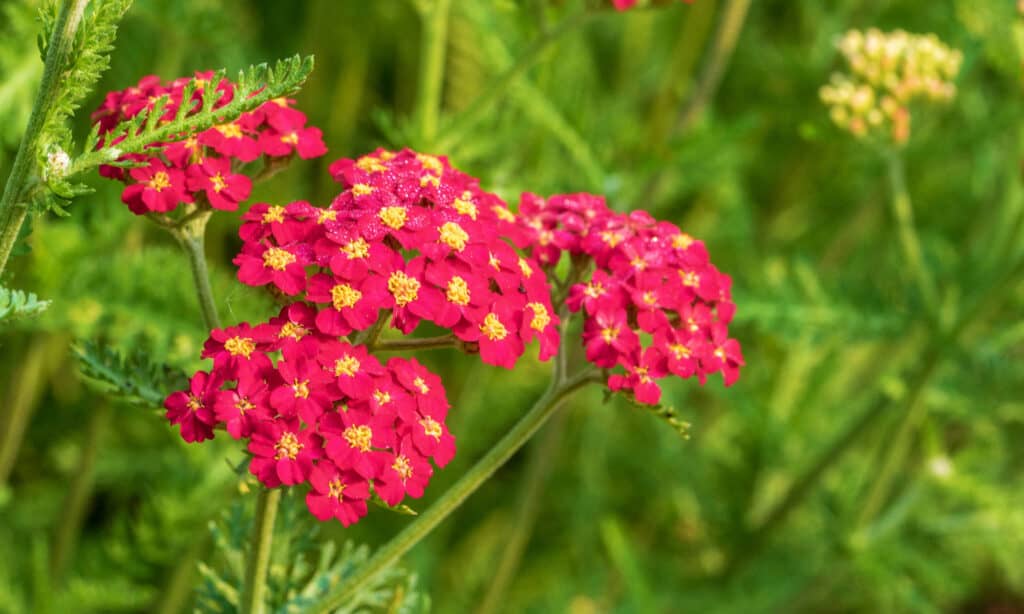
Yarrow is a tough but beautiful flower that attracts bees, butterflies, and hoverflies.
©Jennifer Yakey-Ault/Shutterstock.com
2. Cardinal Flower
Tall spires of red, white, or rose-colored cardinal flowers create a splash of epic color across zones 3-9, so it’s perfect for Mississippi.
Cardinal flowers reach a maximum height of four feet and spread up to two feet wide. Full sun is best for this native flower, but it’ll cope with some shade too. In zone 9, a position sheltered from the roasting afternoon sun helps keep its color bright.
Plant out in early spring and expect flower buds in July. By August, a stem of color should feed your visiting hummingbirds. This hardworking flower gives much more than it expects in return, but it’s a short-lived perennial that rarely lasts longer than two to three years. You can extend its lifespan by splitting the clump every two years.
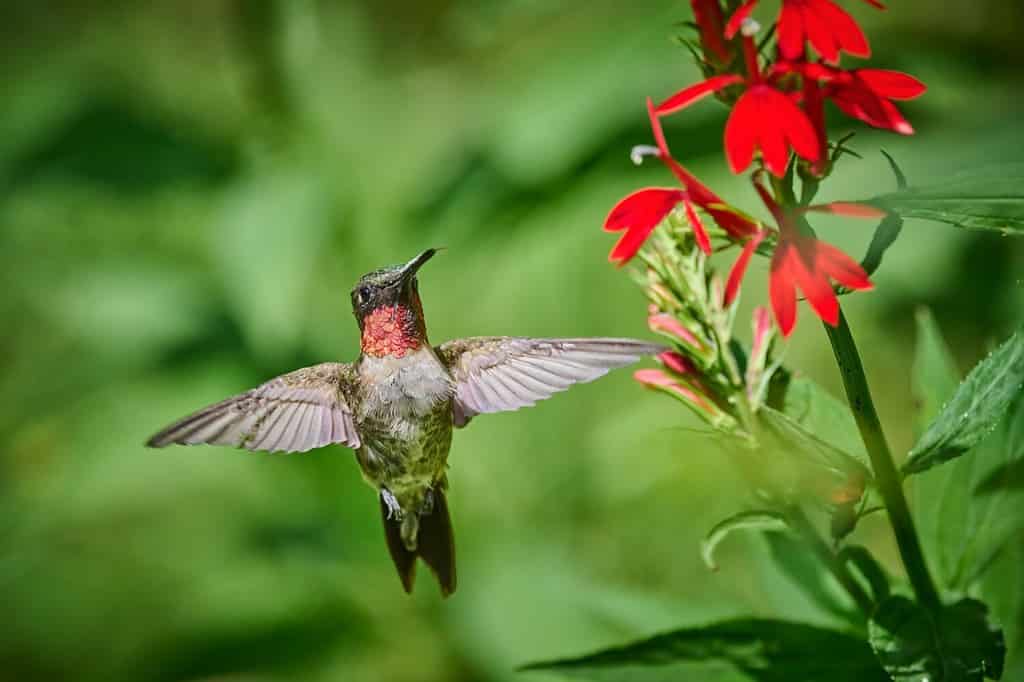
Ruby-throated hummingbirds adore cardinal flowers’ easy-to-access blooms.
©Patrick Jennings/Shutterstock.com
3. Black-Eyed Susan
Perennial black-eyed Susan is a southern state staple and one of the best flowers to plant in Mississippi. It adores Mississippi’s heat, and because it’s a prairie plant, it tolerates drought once established. Its golden yellow blooms with dark centers resemble mini sunflowers, but unlike sunflowers, they form a swathe of gold from June until fall.
Black-eyed susan reaches three feet tall, and the clump spreads each year, so it’s perfect for the back of a border where it feeds pollinators. It’ll grow in the majority of soils except waterlogged areas, and it’ll reseed across the garden without assistance. Zones 3-9 suit this tough native, but beware cultivars that can’t cope with Zone 9 Mississippi summers. Check labels before spending any money to make sure it’s a suitable cultivar.
Plant black-eyed susan out in early spring, give it plenty of water, and deadhead blooms as they go over to keep fresh new flowers coming.
Flower arrangers love black-eyed susan because the stems last for weeks in floral arrangements, and taking a few from each clump doesn’t ruin border displays.
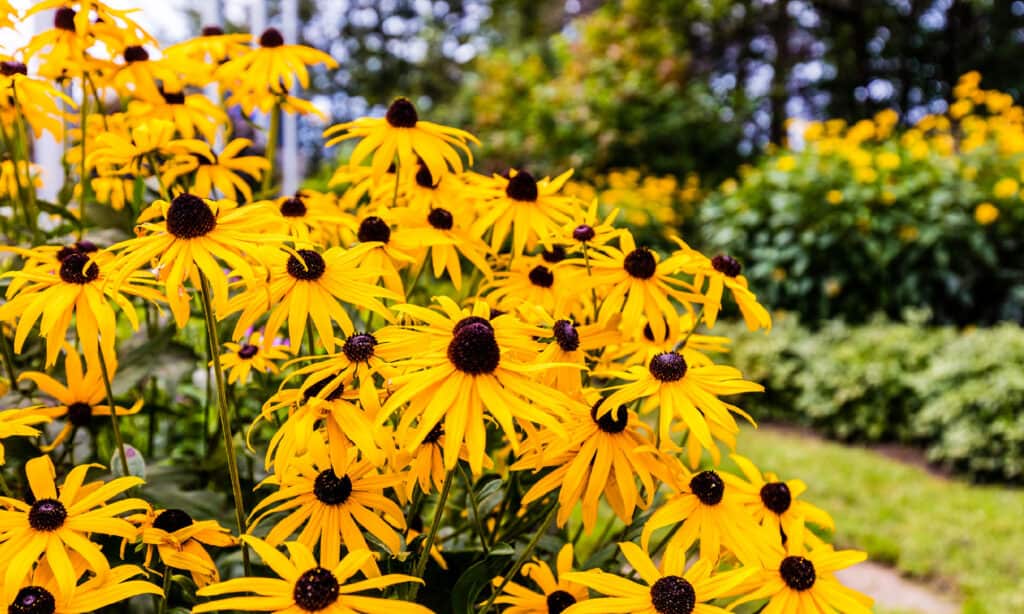
Perennial black-eyed susan suits zone 3-9, but beware of more tender cultivars.
©iStock.com/Dopeyden
4. Hydrangea
Mississippi zones 3-8 best suit Japanese native hydrangeas, but a shady to partially shady spot is essential because hydrangeas need protection from the full sun.
Many hydrangeas reach six to eight feet tall and bloom large pink flowers in alkaline soil and blue flowers in acidic soil. White hydrangeas like Annabelle remain white in both soil types.
Plant your zone-suitable choice in well-drained, organically rich soil with morning sun and afternoon shade for the best results. It’s best to plant hydrangeas in the fall when the soil is warm because they need consistently damp roots.
Hydrangeas lose their leaves over winter but emerge again in spring. Expect flowers in late spring and throughout the summer months. Deadhead as they go over and apply a really thick layer of mulch to the base. Mulch provides extra nutrients, and it traps essential moisture, too.
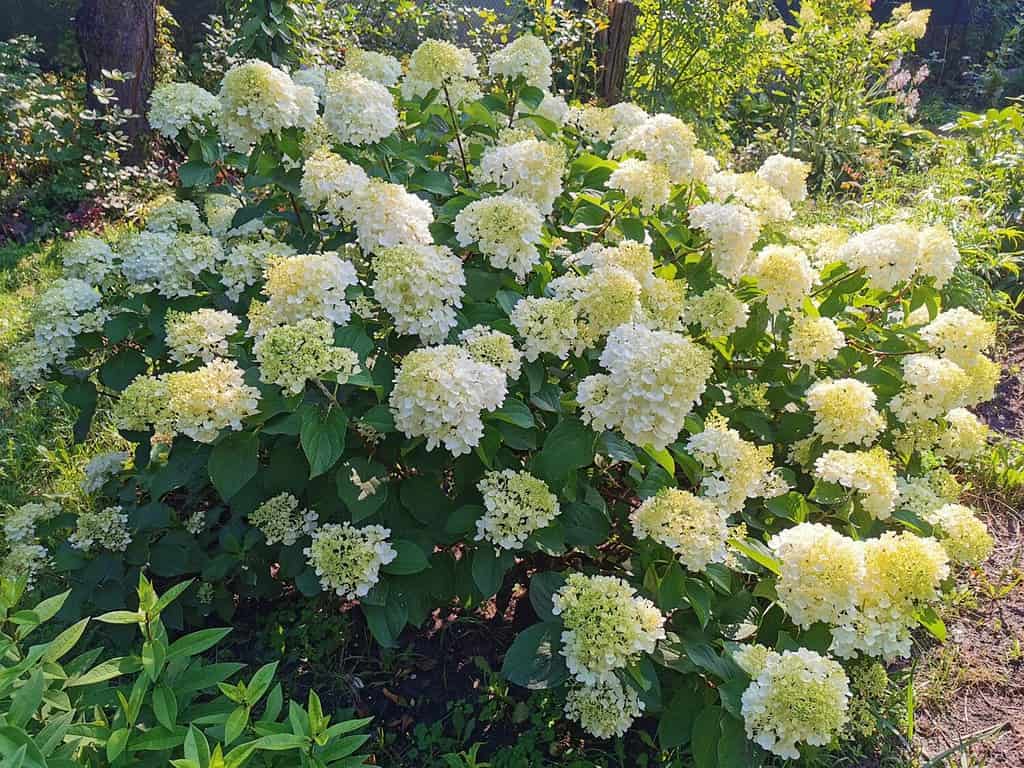
White hydrangeas stay white no matter the soil pH.
©Zoya Pustovoyt/Shutterstock.com
5. Asters
Asters thrive in Mississippi’s warmth and take the prize in fall when they can be one of the last flowers standing. Zones 3 to 10 suit this toughie, but do check the cultivar in case it’s a tender version.
These perennial beauties resemble frilly daisies on a clump of gray-green foliage. Bees and butterflies adore asters, especially in fall when nectar supplies dwindle. It’s among the best flowers to plant in Mississippi for fall-time bees.
Depending on the species, asters range from a few inches in height to several feet, and the color choice is endless. Choose from purple, blue, pink, yellow, and red – there’s always one to suit a bare spot.
Asters love full sun, but they cope with partial shade, too. Pretty much any well-drained soil is suitable, and they like containers, too, so long as you remember to water them frequently! Deadhead when required, and they just keep coming.
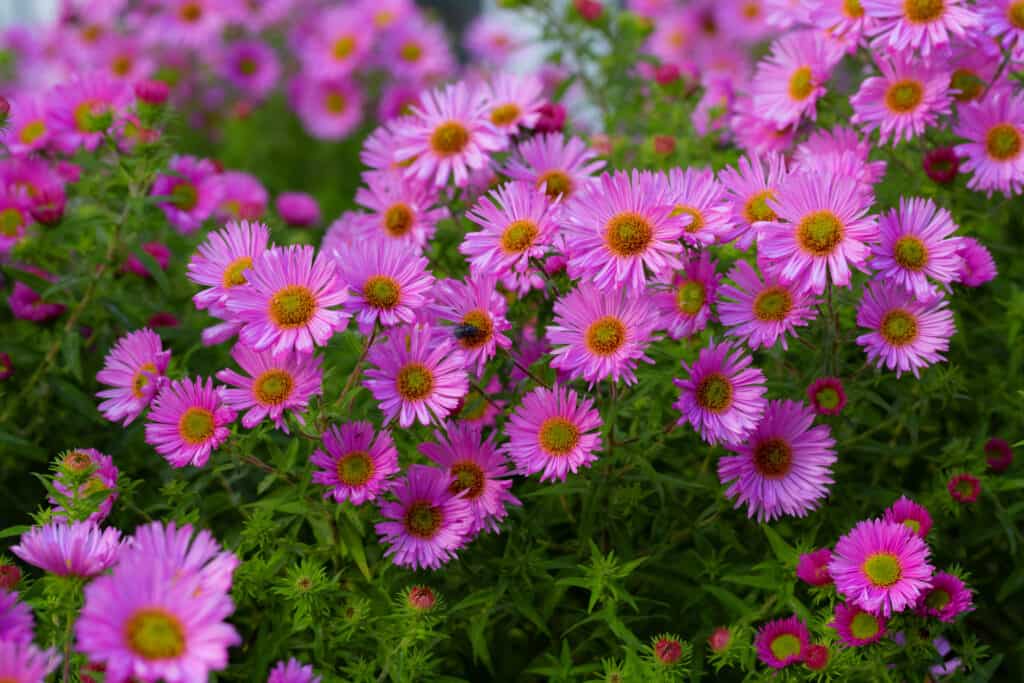
Asters bloom through the fall, so they are excellent food for pollinators.
©iStock.com/Inna Giliarova
6. Swamp Rose
Mississippi’s wild roses are not just beautiful. They’re bombproof and excellent choices for pollinator-friendly gardens. One of the most well-known is the swamp rose, a North American native that loves damp soil. That said, it’ll cope in most spots because it’s a true survivor.
Upright swamp rose is a mass of arching dark-green thorny branches and medium pink roses with stunning perfume. They’ll only bloom from late spring to early summer, but this flush of color and scent is worth it.
Swamp roses can reach eight feet tall, so pruning is essential if you want them in your garden. Cut it back hard in early spring and use the cuttings to make new baby swamp roses. Although it prefers full sun and damp roots, this rose will grow in the majority of spots. It’s native to Mississippi state, so it suits all of Mississippi’s growing zones.
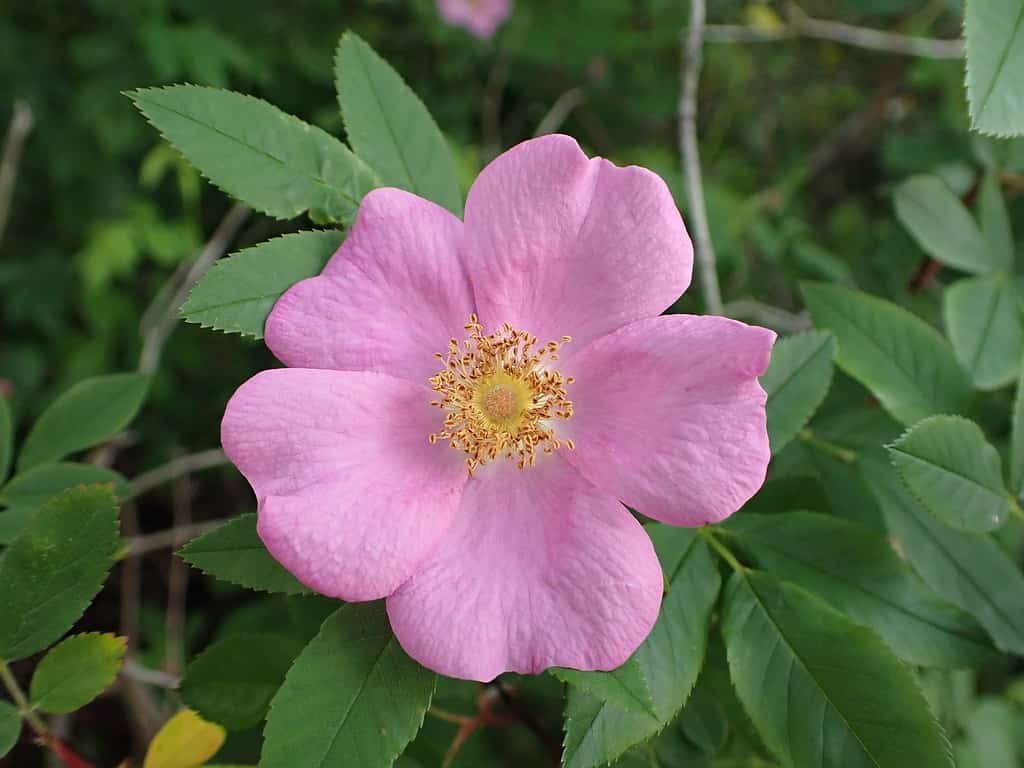
Native swamp rose has beautiful perfume, but its flowers finish in late spring.
©Dan4Earth/Shutterstock.com
7. Lady Banks’ Rose
If you love roses, then Mississippi favorite, the Lady Banks’ Rose, is for you. This thornless semi-evergreen wild rose is native to China. It arrived in North America during the 19th century, and botanists named it after Dorothea Lady Banks in 1807.
Scrambling drought-tolerant Lady Banks’ rose is one of the best flowers to plant in Mississippi because it suits the growing zones and is particularly resistant to mildew or blackspot. Its striking single or double white to yellow roses are lightly fragranced and reach around ¾ of an inch across. Bees adore Lady Banks’ rose, and because it blooms in early spring, it feeds the chilly and hungry early wakers.
Grow Lady Banks’ rose in a sunny spot up a wall or fence line. It needs a strong trellis and tying in because it quickly reaches up to twenty feet long. Cut it back after blooming or wait for birds to eat the hips in late fall before cutting it back ready for next year’s growth.
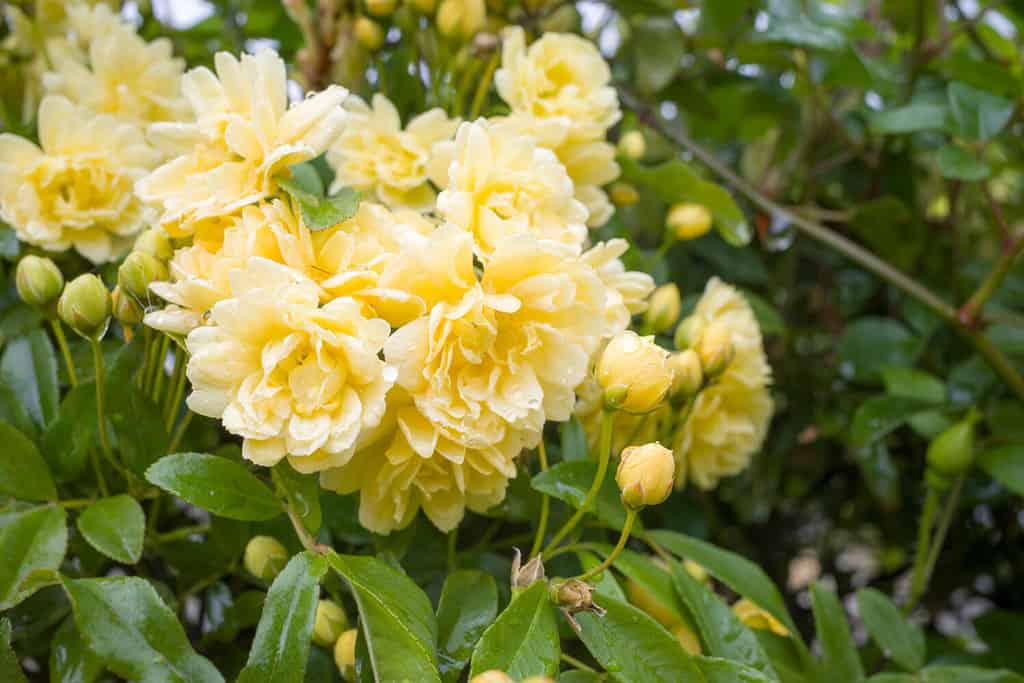
Lady Bank’s rose originates from China. Its sweet perfume attracts pollinators.
©Itsunfotos/Shutterstock.com
8. Nasturtiums
Edible red, pink, yellow, or orange nasturtiums look best grown as annuals each year. In Mississippi, nasturtiums are one of the best flowers for hummingbirds, especially the trailing varieties.
Choose bush or trailing nasturtiums from seed or plug plants in early spring, and they quickly grow in a sunny to partially shady spot. Expect flowers in mid-summer until fall if you keep deadheading the spent blooms.
Tough nasturtiums thrive in zones 2-11, so they’re perfect for Mississippi’s growing zones. Plant yours in well-drained fertile soil and keep them watered. For the brightest blooms, apply fertilizer! Nasturtiums in containers need daily water in the hot months and weekly fertilizer because they’re hungry plants. Some cultivars reach ten feet long!
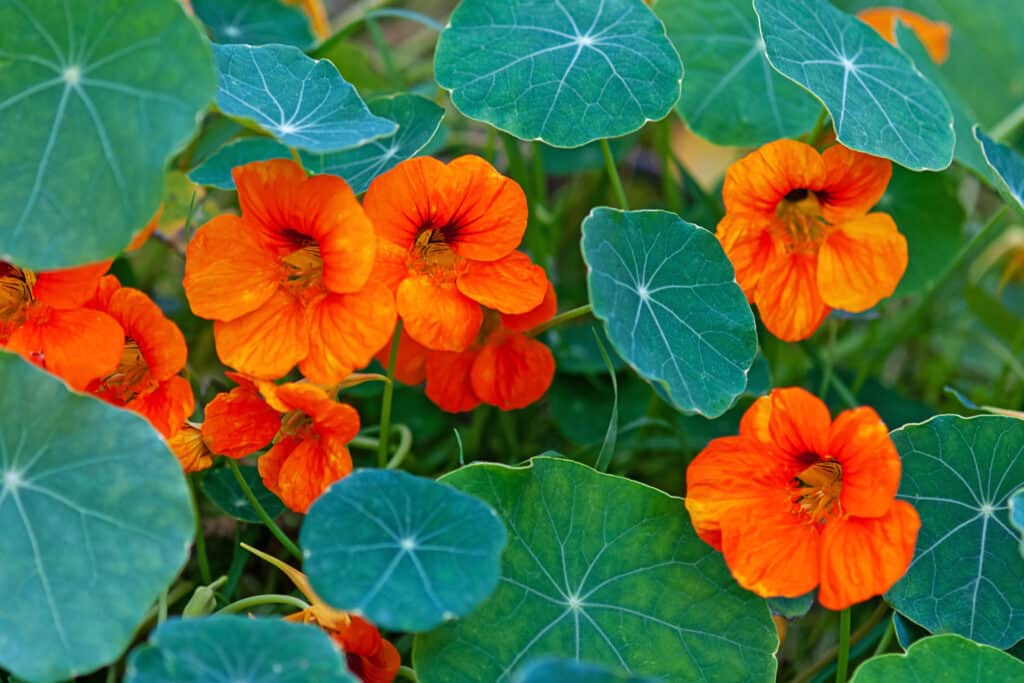
Nasturtiums have bright orange, yellow, or red ornamental edible flowers.
©iStock.com/Nadya So
9. Milkweed
Native milkweed is not a weed. It’s a stunning five-foot tall butterfly-attracting flower with bright orange and yellow flower clusters on tough gray-green stems. It flowers from late spring to summer in most garden soils in growing zones 3 to 9.
Easy-to-grow milkweed takes time to bloom, but when grown, it’s a complete habitat for monarch butterflies. Their caterpillars only eat milkweed leaves.
Milkweed’s tuberous roots don’t like moving, so choose a sunny, well-drained spot to plant seeds or small plugs. Then wait because they can take three years to flower! Alternately, purchase fully grown plants and keep them well watered. Adult transplanted milkweed may struggle without extra help, so keep it well-hydrated all summer.
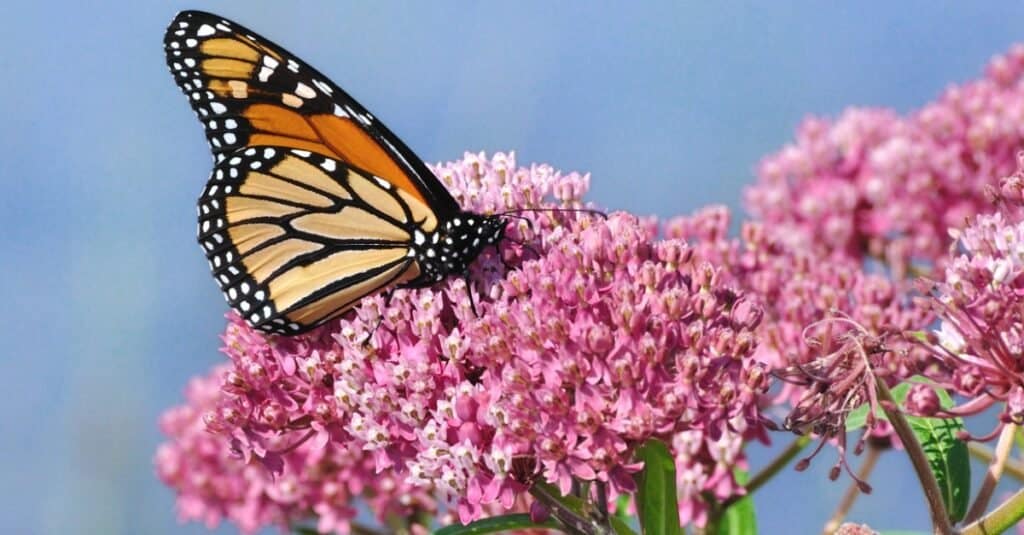
Milkweed is the only flower that monarch caterpillars eat.
©iStock.com/herreid
10. Bee Balm
Beautiful bee balm is one of the prettiest flowers in Mississippi. Although it attracts jeweled hummingbirds and fluffy bees with its red, white, pink, or purple summertime blooms, bee balm actually got its name from Native Americans who used its sap to treat bee stings.
Best grown in zones 4-9, aromatic-foliaged bee balm suits a sunny, well-drained border where it produces stunning blooms until fall. It tolerates hot sun and partial shade but needs moist soil, so during hot spells, regular water is required.
Plant bee balm in early spring and expect flowers in late spring to early summer. In cooler zones, foliage might die down over winter, but it’ll re-emerge the following spring, regrowing to its full size of four by three feet.
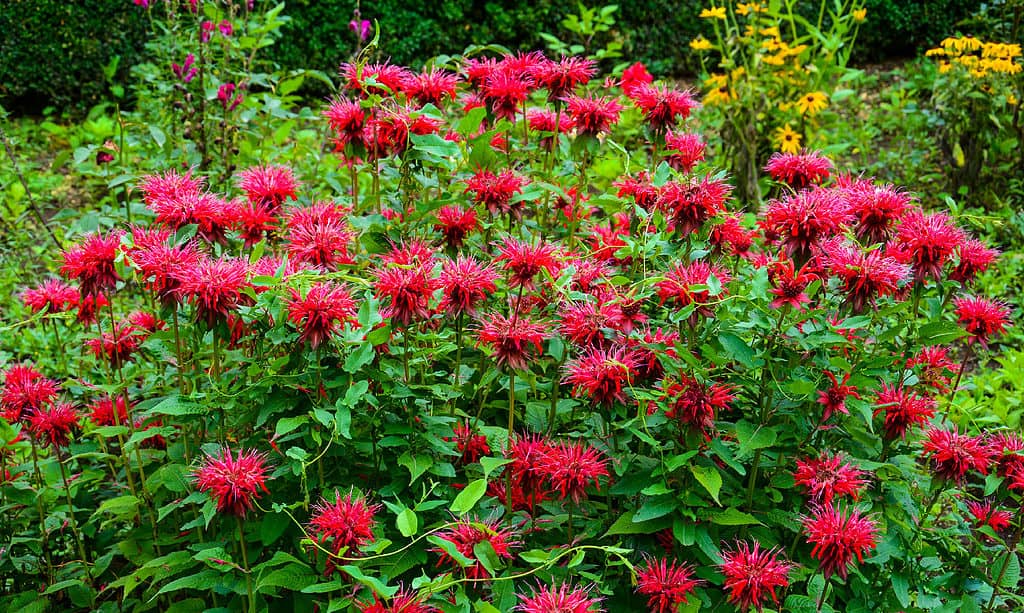
Bee balm flowers from late spring until summer’s end.
©Vahan Abrahamyan/Shutterstock.com
11. Magnolia
Mississippi is the Magnolia state due to its plethora of magnolia flowers, so let’s check out this evergreen shrub.
Due to their color variety, folks say there’s a magnolia to suit every southern gardener, but what’s constant is the magnolia’s large, waxy, glossy leaves and sweetly scented flowers. Pink, white, yellow, spring, summer, or winter flowering, showy magnolia in Mississippi really are favorites in southern yards.
Magnolias need full sun to partial shade and well-drained, moist soil to thrive. They can reach 80 feet tall, so choose your cultivar wisely! Although they’re drought tolerant, newly planted magnolias need lots of water to establish a strong root system. Apply lots of well-rotted organic mulch to the roots to trap moisture and avoid treading near the base to reduce soil compaction.
Magnolia flowers attract pollinators, including hummingbirds, from May to June, then again in early fall. Best of all, they don’t need pruning!
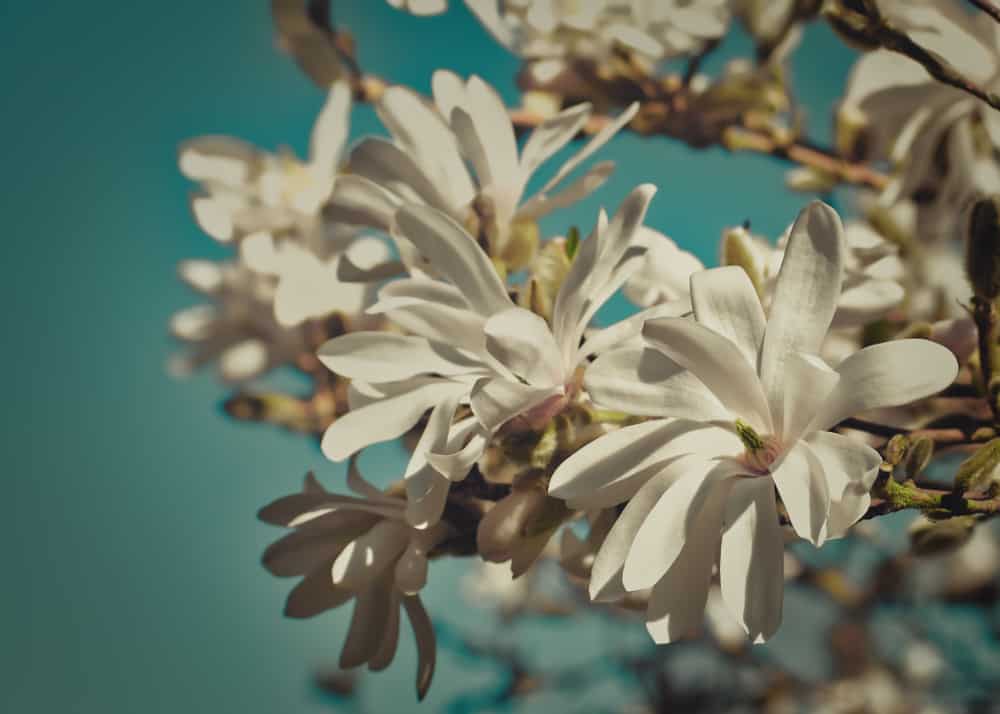
Mississippi is famed for its magnolia trees; some reach 80 feet tall.
©SwedishStockPhotos/Shutterstock.com
The photo featured at the top of this post is © Svetlana Zhukova/Shutterstock.com
Thank you for reading! Have some feedback for us? Contact the AZ Animals editorial team.






